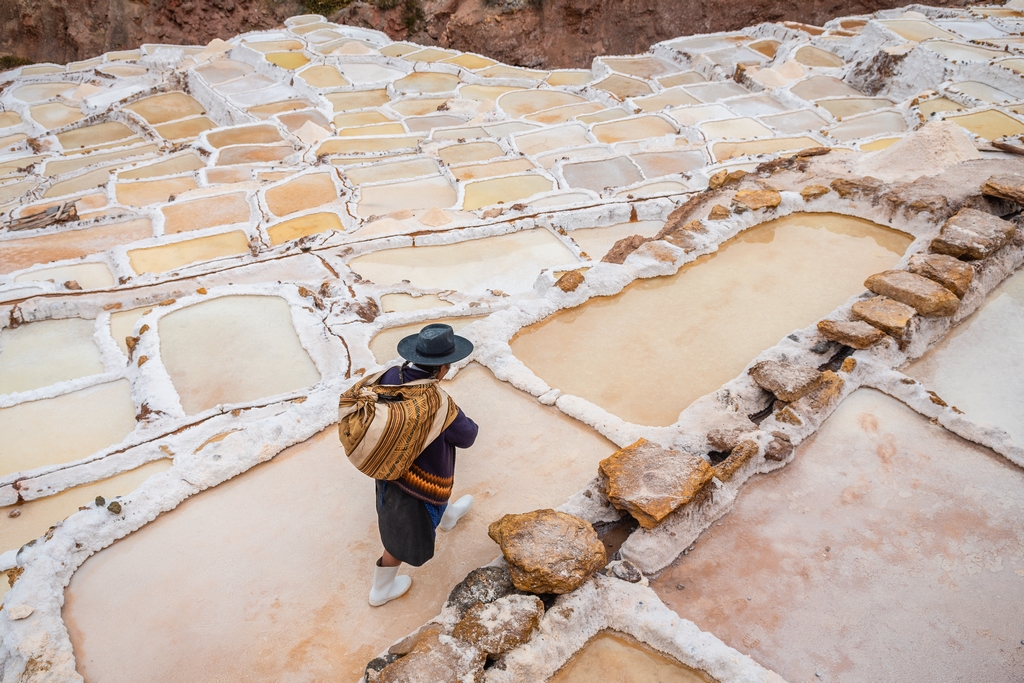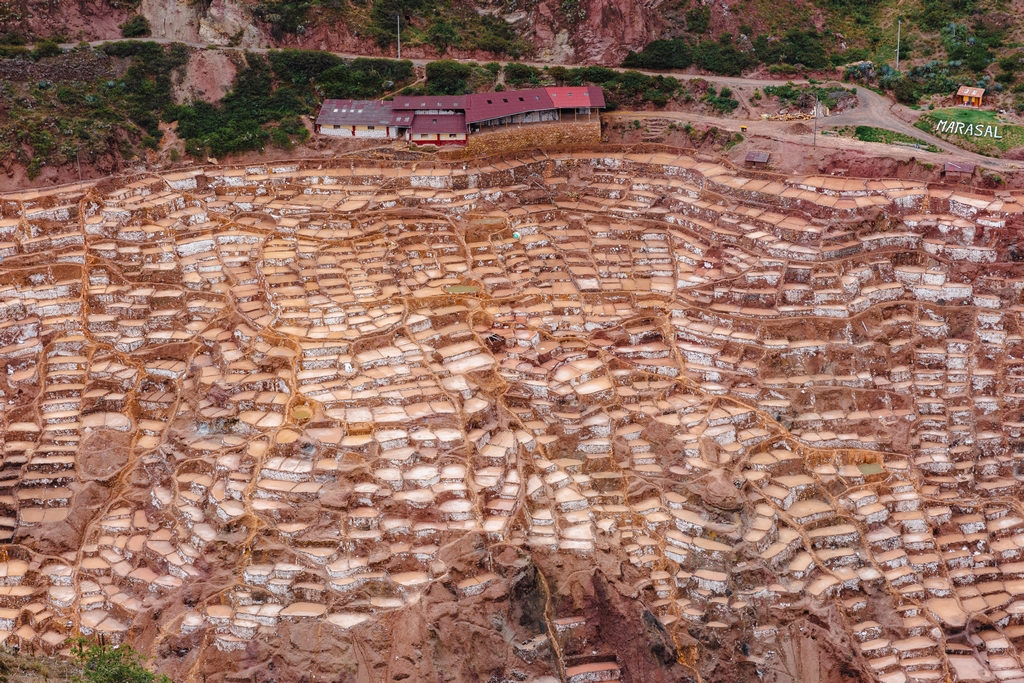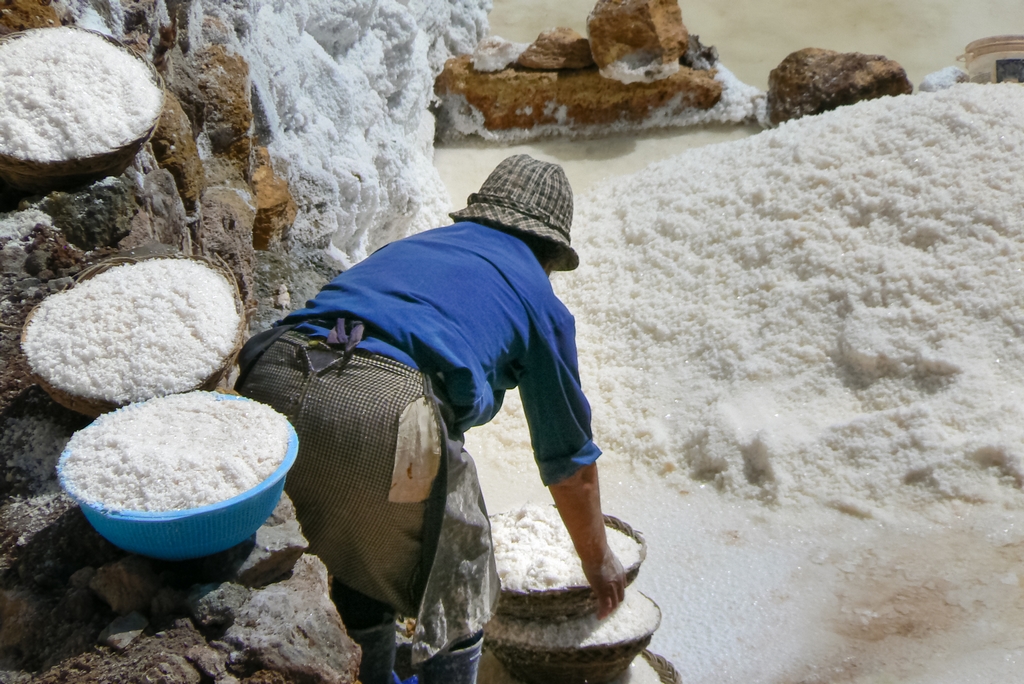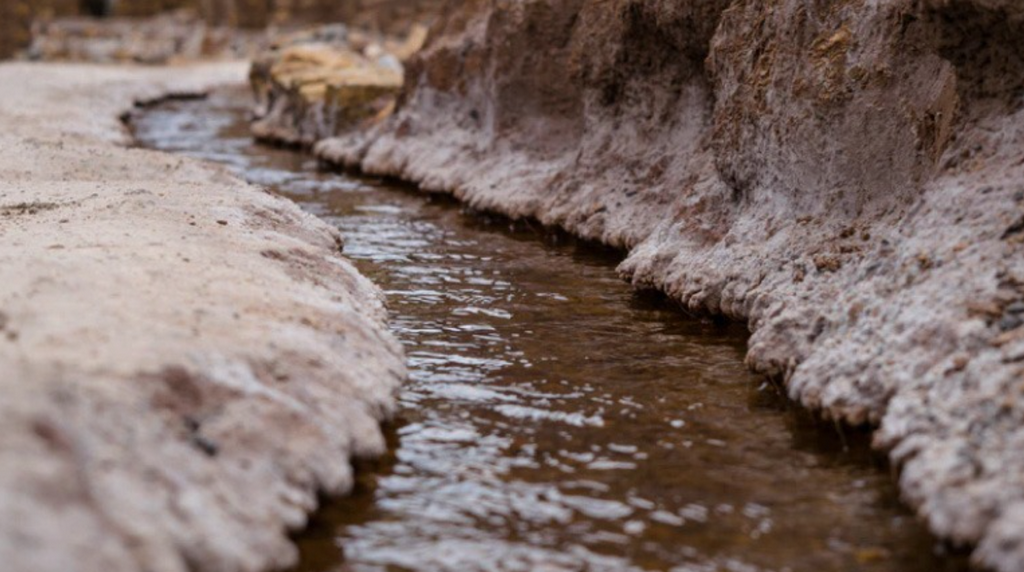Divine Brine: A Visit to the Maras Salt Mines


Salt and water are literally natural companions, defining the very nature of our natural world, and indeed our own human existence. Nowhere is that more evident than at a remote location in the Peruvian Andes known as the Maras Salt Mines, or “Salineras de Maras” where salt has been extracted from water for centuries, creating a landscape unlike any other.
By David J. Peterson
Located high in the Andes in the Sacred Valley of the Incas in Peru, the Maras Salt Mines comprise a truly remarkable historical, geological, and economic landmark. It is a place steeped in history, necessity and ancient innovation.
The site is comprised of hundreds of centuries-old salt “pans” covering a towering mountainside that were first established during the time of the Incan Empire, most of which remain in use today. Essentially a massive set of settlement ponds, the pans and the salt they produce have long been an essential part of the local economy and sustenance – providing the region’s inhabitants with reliable supply of salt, which was a staple of life in Mesoamerica, and indeed throughout most of the world, especially prior to refrigeration.
I visited the site in September 2024 as part of a Machu Pichu tour organized by Watershape University, and our esteemed leader of such cultural journeys, Lea Frederick. It was an amazing trip and our day spent at Salineras de Maras was one of several highlights.
Even from a distance, you’re instantly immersed in the uniqueness of the scene and its massive scale, which covers an entire mountainside in terraced mosaic of white evaporating pools. I was instantly fascinated and was eager to satisfy my curiosity about the the history, geology, structure, hydraulic design, economic role, and environmental concerns associated with this awe-inspiring place.
SALTY HISTORIES
The narrative begins with sodium chloride itself. Even though it’s easy to take for granted these days, salt has played an integral role throughout human history, once so valuable that salt was used as currency, and the word “salary” itself is derived from “salarium,” the Latin word for salt. Salt was not only used to preserve and flavor food, but it also helped drive trade and the development of early economies. It has continued to play an historic role into modern times.
As an example of its essential value in the 20th Century, half a world away, Mahatma Gandhi’s act of making salt during the “Salt March” of 1930 was a famously pivotal event in India’s struggle for independence from British colonial rule. This seemingly simple act of defiance carried profound symbolic, economic, and political weight, galvanizing a nation and exposing the vulnerabilities of British imperial authority. Gandhi chose salt as the symbol of peaceful rebellion because of its unifying and essential nature.
In the case of the Maras Salt Mines, salt extraction demonstrates how, for centuries, natural resources shaped the livelihoods of Andean people. The mines serve as a living example of the resource’s importance in sustaining ancient economies and facilitating trade networks across vast distances. Today, while the nature of the salt trade has changed, the salt mines remain a powerful symbol of the enduring connection between people and their environment.
RESOURCEFUL ADVANTAGE
The Incas ingeniously exploited this natural salt source, which they discovered from a subterranean stream rich in saline content
The village of Maras, established in the mid-16th century, became the salt center in the region. Each family was allocated their own salt pans, passing down ownership through generations. During colonial times, the salt produced there remained a significant commodity for local trade and was bartered for food, textiles, and other goods. Excavations in the Maras area have revealed archaeological sites with fragments of ceramics from various periods, including Chanapata (700 B.C.), Killke (1000 A.D.), and Inca styles.
The traditional methods of salt extraction have remained largely unchanged, and the salt from Maras continues to be collected and distributed in much the same way it was centuries ago. Geologically, the Maras Salt Mines are unique due to the area’s hydrogeological conditions. They are located on a slope in the Sacred Valley, roughly 3,000 meters (9,842 feet) above sea level, where underground streams dissolve salt from the surrounding rock, which is rich with the briny bounty.
The saltwater from the spring is channeled into the thousands of small pools through an intricate system of narrow irrigation channels, which are carefully monitored and controlled.
As the water evaporates due to the strong Andean sun, the salt crystallizes and forms a crust on the surface of the pans, which is then collected by hand. This process is slow and labor-intensive, but requires minimal technology beyond the existing infrastructure of channels and pans. The natural salinity of the water, coupled with the high altitude and arid climate, creates ideal conditions for salt extraction.
SALINE COLLECTIVE
Each pan, numbering more than 6,000, is typically less than four square meters in size and 30 centimeters deep. The organization of the salt mines is collective and cooperative. While each family is responsible for their own pans, they work in coordination with one another, ensuring that the water flow is properly regulated, fairly distributed, and that the overall system remains functional.
The local community also oversees the equitable distribution of pans among families, and although the salt is sold commercially, the operation remains largely independent and community-driven. This traditional organizational model is an example of sustainable, cooperative production that has obviously withstood the test of time.
The economic role of the Maras salt mines has evolved. While the demand for salt as a preservative has decreased due to refrigeration technology, Maras salt is still highly valued, particularly for its unique flavor and high mineral content. Artisanal and gourmet markets have become important consumers, with Maras salt often marketed as a premium product for culinary use.
Additionally, the salt mines have become a significant tourist attraction, contributing to the local economy through tourism-related activities.
Visitors like us are drawn to the site for its stunning landscape and historical significance. The panoramic view of thousands of glistening salt pans cascading down the mountainside is breathtaking.
The influx of tourists has, however, also raised concerns about the preservation of the salt pans and the impact of tourism on the local environment and culture.
Despite the Maras Salt Mines’ historical and economic importance, there are environmental concerns associated with the continued operation of the site. The traditional methods of salt extraction are sustainable in the sense that they rely on natural evaporation and manual labor, but the increasing number of tourists poses potential risks.
One of the main concerns is the pollution of the salt pans, particularly due to waste left by visitors. Additionally, the growth of tourism infrastructure, such as roads and lodging, could disturb the delicate balance of the area’s hydrogeology. The local community is mindful of these challenges, and efforts are being made to regulate tourism and protect the environment, while allowing for sustainable economic growth.
TIMELESS INGREDIENT
The Maras Salt Mines are, indeed, an impressive sight, offering a fascinating glimpse into the ancient relationship between humans and salt. In the grand scheme of human history, they are but one chapter in the ages long story of salt’s significance. Yet, they stand as a vivid reminder of how a simple mineral has shaped civilizations, economies, and cultures across time.
I left not knowing whether or not I’ll ever make it back to this extraordinary place of peaceful salinity, but nonetheless grateful for the taste of something so ancient and essential.
David J. Peterson, P.E, IWI, is co-founder of Watershape University and president of Watershape Consulting, Inc.
Opening image by Jon Chica | Shutterstock; hillside by Chrissy Vasquez | Shutterstock; salt miner by The World Travelor | Shutterstock; salty stream Beto Sullivan.












